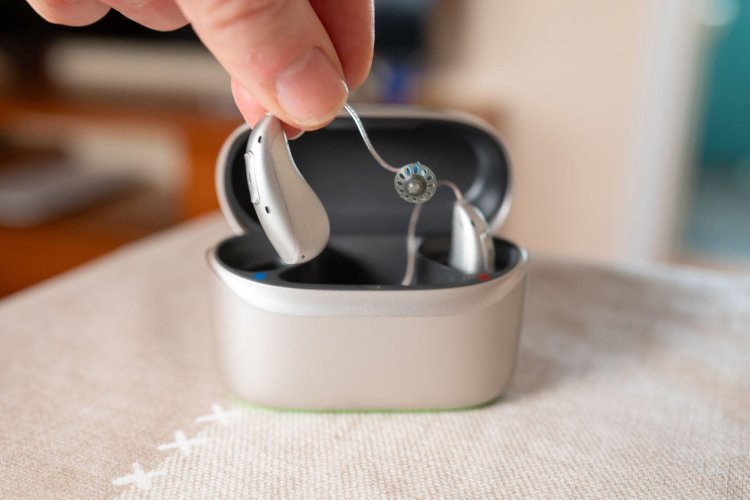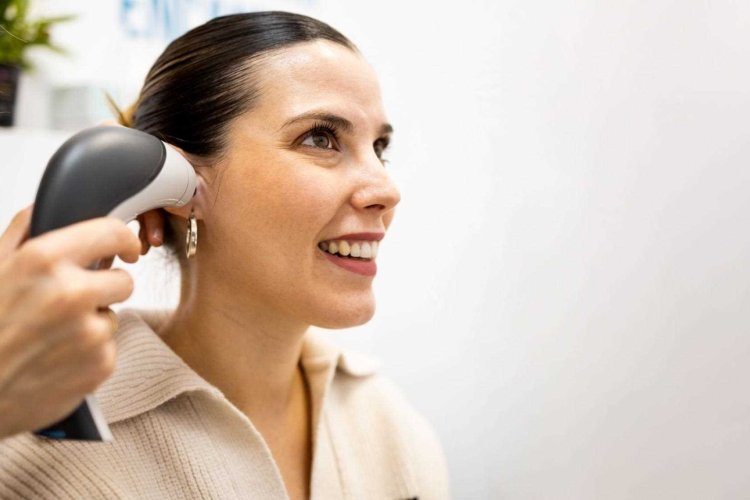Many of us use headphones every day. We listen to music on our morning commute, enjoy podcasts at the gym, and take calls during the workday. They make it easy to stay connected and entertained, but frequent use can bring hidden risks to your hearing health.
Many people don’t think about increasing the volume or wearing earbuds for hours. However, these habits can slowly harm your ears, though the damage may not be obvious at first.
How Headphones Affect Your Hearing
Direct Sound Exposure
Headphones deliver sound straight into your ear canal. This proximity puts the delicate structures of your inner ear at risk of damage. Direct exposure increases the chances of developing issues like tinnitus and hearing loss when used improperly.
Listening at High Volumes
Using headphones at volumes above 85 decibels can harm your hearing over time. That’s roughly the level of a loud vacuum cleaner. It’s easy to turn up the volume to drown out background noise, but doing so puts your hearing at serious risk.
Extended Use
Regardless of volume, using headphones for hours can cause fatigue in your ears. Without breaks, the risk of hearing damage increases slowly and silently, without warning signs. Long-term use without rest is a major contributor to the link between headphones and hearing loss.
Common Side Effects of Frequent Headphone Use
Temporary Hearing Loss
If sounds around you seem quiet or unclear after you remove your headphones, you might have a temporary threshold shift. This is a form of short-term hearing loss caused by overstimulated ears.
Permanent Hearing Loss
One of the most serious risks of frequent headphone use is permanent hearing loss. Repeated exposure to loud volumes can cause lasting damage to the inner ear, which cannot be reversed. This is one key way headphones and hearing loss are connected.
Tinnitus
Persistent ringing or buzzing in your ears can be a side effect of prolonged exposure to loud sounds. Tinnitus can be temporary. However, it can become a long-term issue. It can affect sleep, focus, and overall well-being. It’s one of the most common and overlooked dangers of headphones.
Ear Infections
Headphones can become breeding grounds for bacteria. Wearing them for a long time can lead to infections. This is especially true if you insert earbuds deep into your ear canal. Avoid sharing your earbuds and remember to clean them thoroughly.
Earwax Buildup
Frequent headphone use can push wax deeper into the ear, leading to blockages, discomfort, and even temporary hearing loss. It can also lead your ears to produce excess wax, which might require a professional cleaning to remove the buildup.
How to Protect Your Hearing While Using Headphones
You don't necessarily need to forgo your headphones to practice safe hearing habits. Here are a few practical tips to protect your ears:
- Follow the 60/60 Rule: Listen at volumes that don’t exceed 60% of your device's volume for no more than 60 minutes at a time.
- Take Listening Breaks: Give your ears a 5-minute break every hour during long listening sessions.
- Invest in Noise-Canceling Headphones: These allow you to listen at lower volumes by reducing background noise.
- Choose Over-Ear Headphones: These tend to be safer than earbuds, as they sit outside the ear canal and reduce direct pressure on the eardrum.
Concerned About Your Hearing?
Headphones are a part of everyday life, but using them responsibly is key to maintaining your hearing. Remember that our ears aren’t built for constant, high-volume sound. The risks of frequent headphone use are real, but preventable.
Understanding how headphones affect your hearing helps you build safe listening habits that protect your long-term health. You can enjoy your favorite music or podcasts. Just follow safe listening habits. Also, be aware of the early signs of hearing loss. This will help you keep your hearing healthy for a long time.
At Beltone South, we're with you at every step. If you have symptoms or want to prevent future problems, a professional hearing exam is a good first step.






